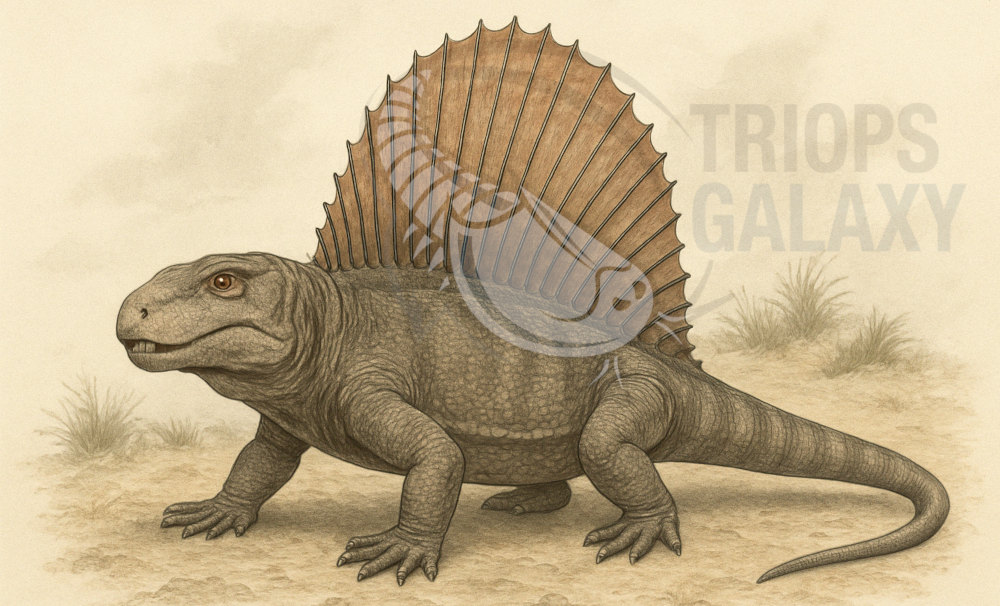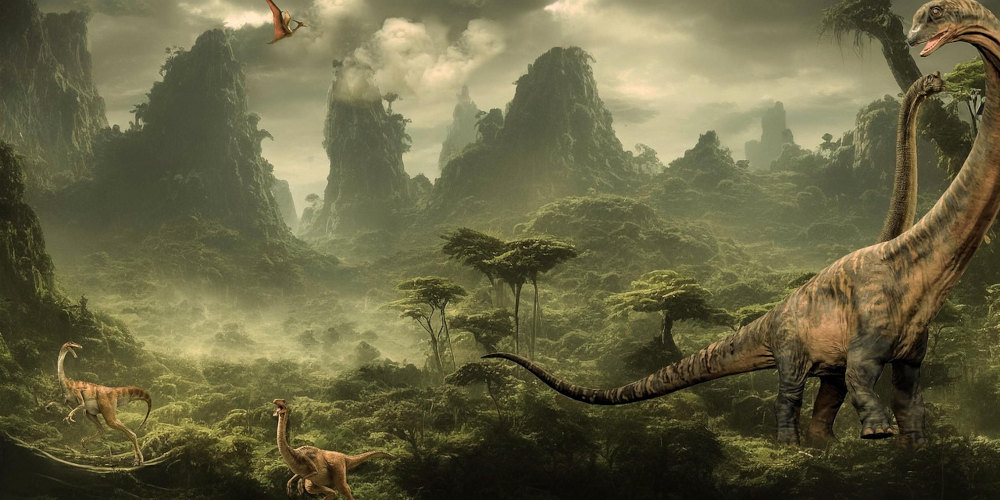Guide
Synapsids: Do you know the forgotten rulers of the Permian period?
When you think of the primeval rulers of the earth, dinosaurs probably immediately spring to mind. Giant creatures that stomped through tropical forests in the Jurassic period and dominated the earth for millions of years. But what if I told you that a completely different group was in charge long before the dinosaurs? Welcome to the Permian period, around 299 to 252 million years ago. It’s a phase of the Palaeozoic Era that is often overlooked, even though it produced one of the most exciting developments in the history of life: the era of the synapsids – the so-called ‘mammal-like reptiles’. They were the precursors of mammals and were at the top of the food chain for a long time. In this blog article, we delve into the world of synapsids.

Synapsids: Pioneers on the way to mammals
Perhaps ‘mammal-like reptile’ sounds strange at first. But evolution does not recognise rigid categories. The synapsids were a kind of intermediate stage – reptiles with characteristics that we associate with mammals today. Some of them already had differentiated teeth, larger brains in relation to their body size and possibly even a certain degree of temperature regulation. They were the pioneers on the road to mammals long before the first dinosaur even took a step.
In the early Permian period, most creatures were still quite simply built. Amphibious animals and early reptiles, which had only just adapted to life on dry land, predominated. But the synapsids soon came into the limelight. One of the best-known representatives of this period is Dimetrodon – a fearsome predator with a distinctive dorsal sail. Although it is often confused with dinosaurs, it actually belongs to the lineage that leads directly to mammals.
First social structures
Although these animals still looked like reptiles on the outside, they differed fundamentally from them in their skull structure. Synapsids had only one temporal opening behind the eye – a feature that separates mammals from reptiles. This skull structure allowed for stronger chewing muscles, which in turn enabled more efficient feeding and more complex diets. This already shows how clever nature is: every little detail can be decisive.
The further the Permian evolved, the more diverse the synapsids became. Both large herbivores and smaller, agile carnivores evolved. Some species already showed the first signs of fur or an insulating skin – indications of an incipient warm-bloodedness, which could have given them a clear advantage in changeable climate zones. Imagine how these animals held their own in dry, hot deserts or cool steppes – with a body that could regulate its temperature better than the competition.
Behaviour also probably became more complex. Cave building, social structures, perhaps even parental care – all of this could have been present to some extent. You can already recognise in it what later became typical in real mammals: Intelligence, adaptability and care for their offspring.
The end of the Permian and the great dying
But then came the great extinction. Around 252 million years ago, the Permian ended with the greatest catastrophe that life on Earth has ever experienced. Around 90 to 95 per cent of all marine life and around 70 per cent of land animals disappeared. Volcanic eruptions in Siberia, toxic gases, rapid climate change – life was almost completely wiped out. The synapsids were hit hard. Many of their species became extinct and their former splendour faded.
But a few survived. They made it through the mass extinction – small, inconspicuous, but tough. These survivors became the therapsids, which continued to exist in the following Triassic period, while at the same time the dinosaurs developed into their heyday. But even though the dinosaurs now took over the world stage, the therapsids did not disappear. They continued to evolve, adapted, shrank in part to mouse-like forms and survived in the shadows of the giants.
The end of the dionosaurs and the hour of the mammals
The dinosaur era spanned around 165 million years – from the late Triassic to the end of the Cretaceous period (approx. 230 to 66 million years ago). During this era, the Mesozoic, dinosaurs developed into the dominant creatures on land. They lived in a variety of habitats: dense forests, open plains, coasts and deserts were all part of their territory. Some were gigantic herbivores like Brachiosaurus, others were feared predators like Tyrannosaurus rex. Behaviour was also complex – some species lived in groups, defended their nests or displayed conspicuous physical features to communicate. The world was warmer and the continents slowly formed into their present shape.

And then came the day when the dinosaurs also disappeared from the planet – 66 million years ago, wiped out by a gigantic asteroid impact. In this new, post-apocalyptic world, the hour of the mammals had come. The descendants of the Synapsids, who once ruled in the Permian period, once again took over the Earth. The synapsids are not just fossils in a museum – they are part of history.
Synapsids – Conclusion
The synapsids of the Permian period were far more than just ‘reptiles with special functions’ – they were the pioneers of a completely new way of life. Their development is an impressive demonstration of the complexity and creativity of evolution. Even before dinosaurs took their first steps, the synapsids had already developed many characteristics that we associate with mammals today. Even though they were almost wiped out by mass extinction, some survived and laid the foundations for the animal world as we know it today. Their story is a fascinating chapter in the history of the earth – one that is often overshadowed by the dinosaurs, but is at least as exciting.
- Triops longicaudatus – Did you know THAT about the American crayfish? - 23. April 2025
- Synapsids: Do you know the forgotten rulers of the Permian period? - 21. April 2025
- Happy Easter! - 20. April 2025